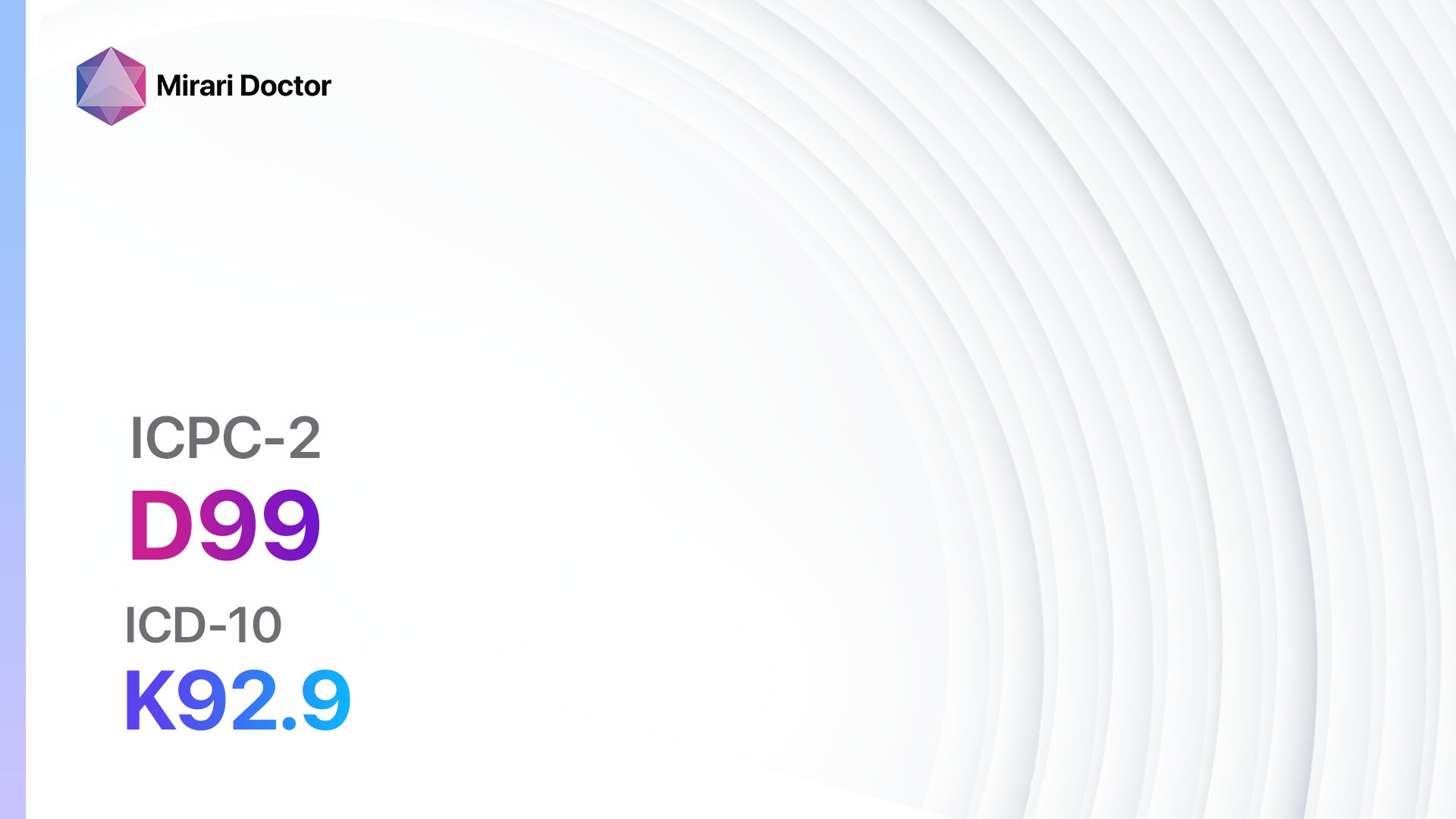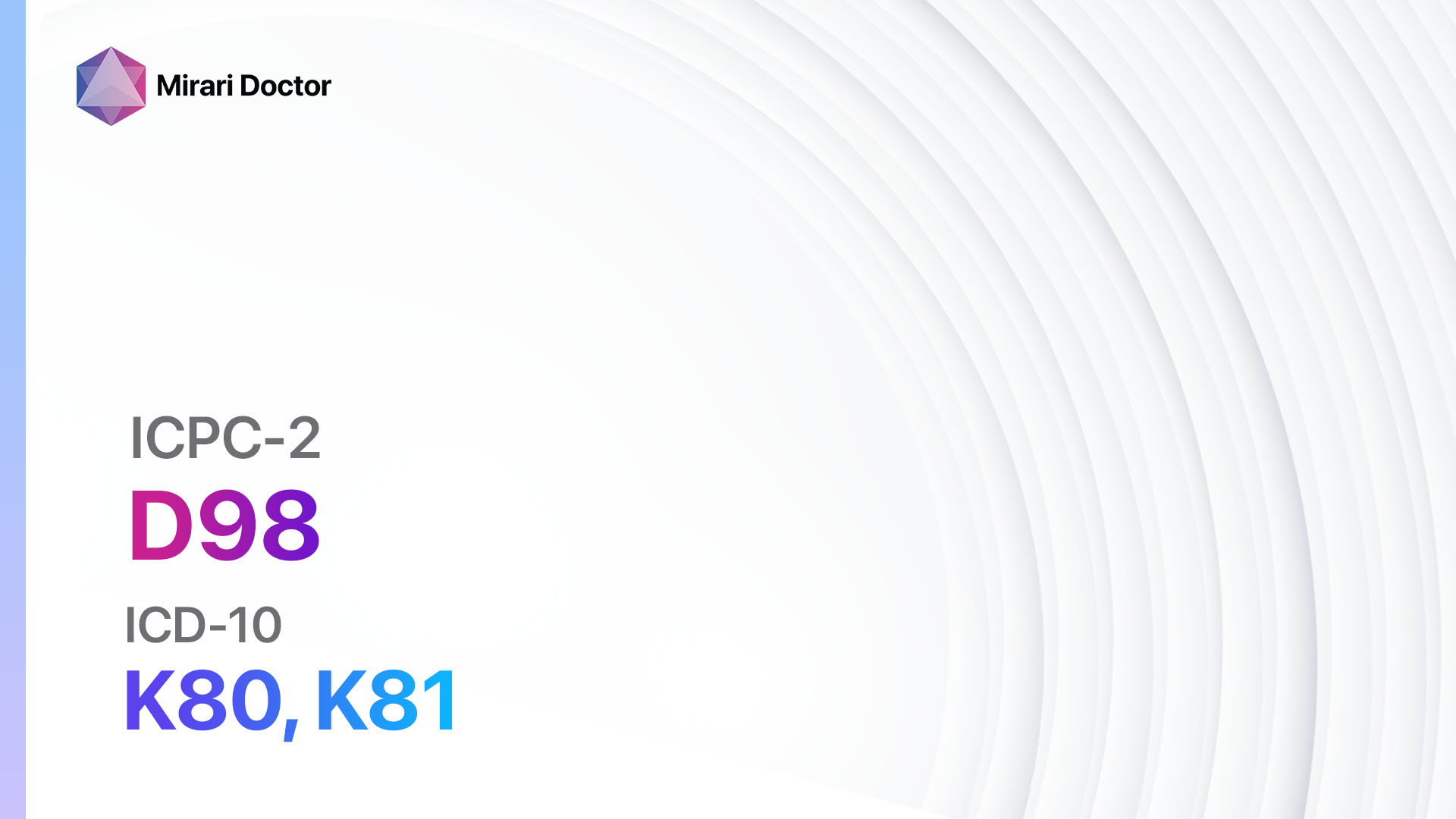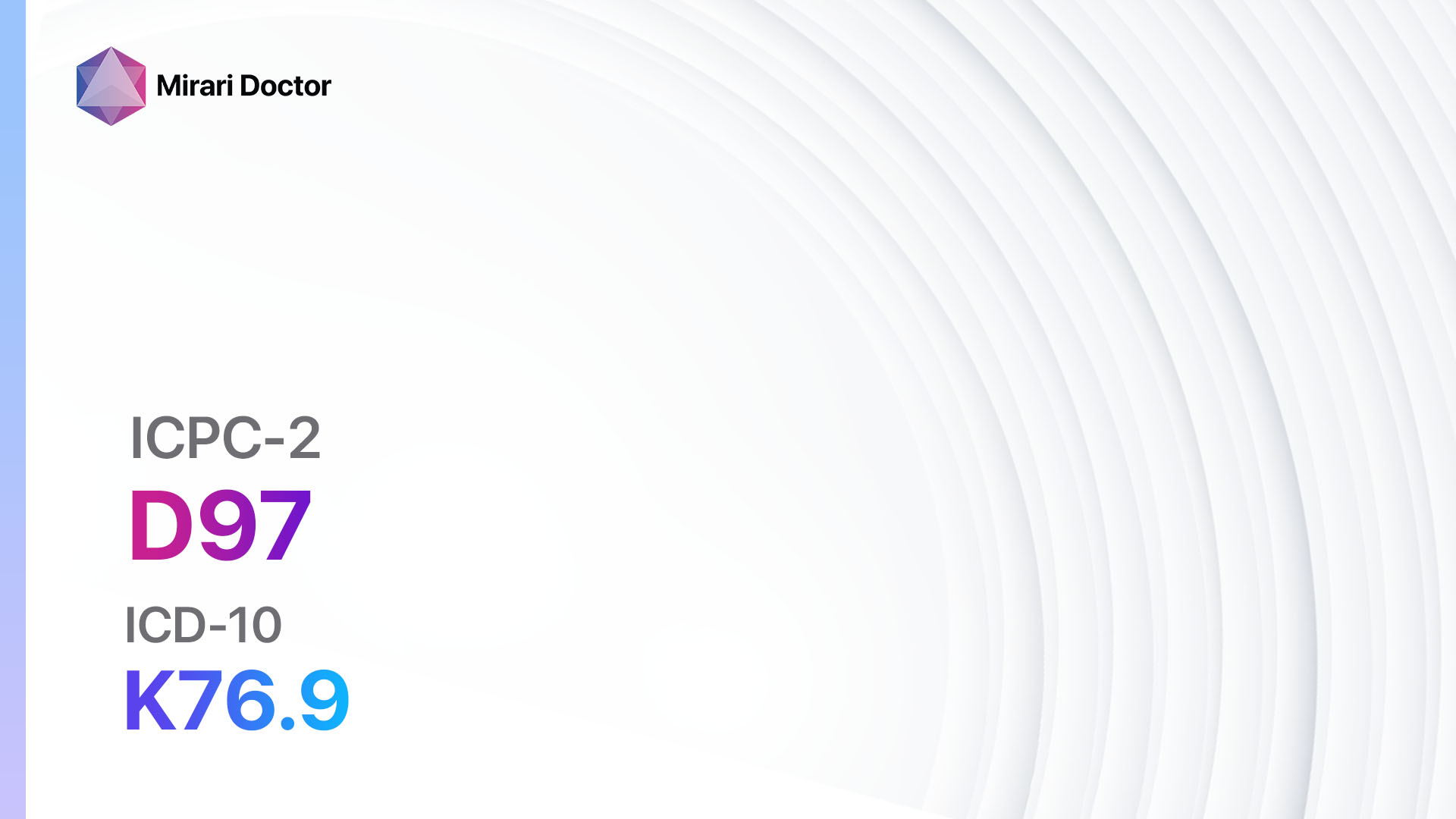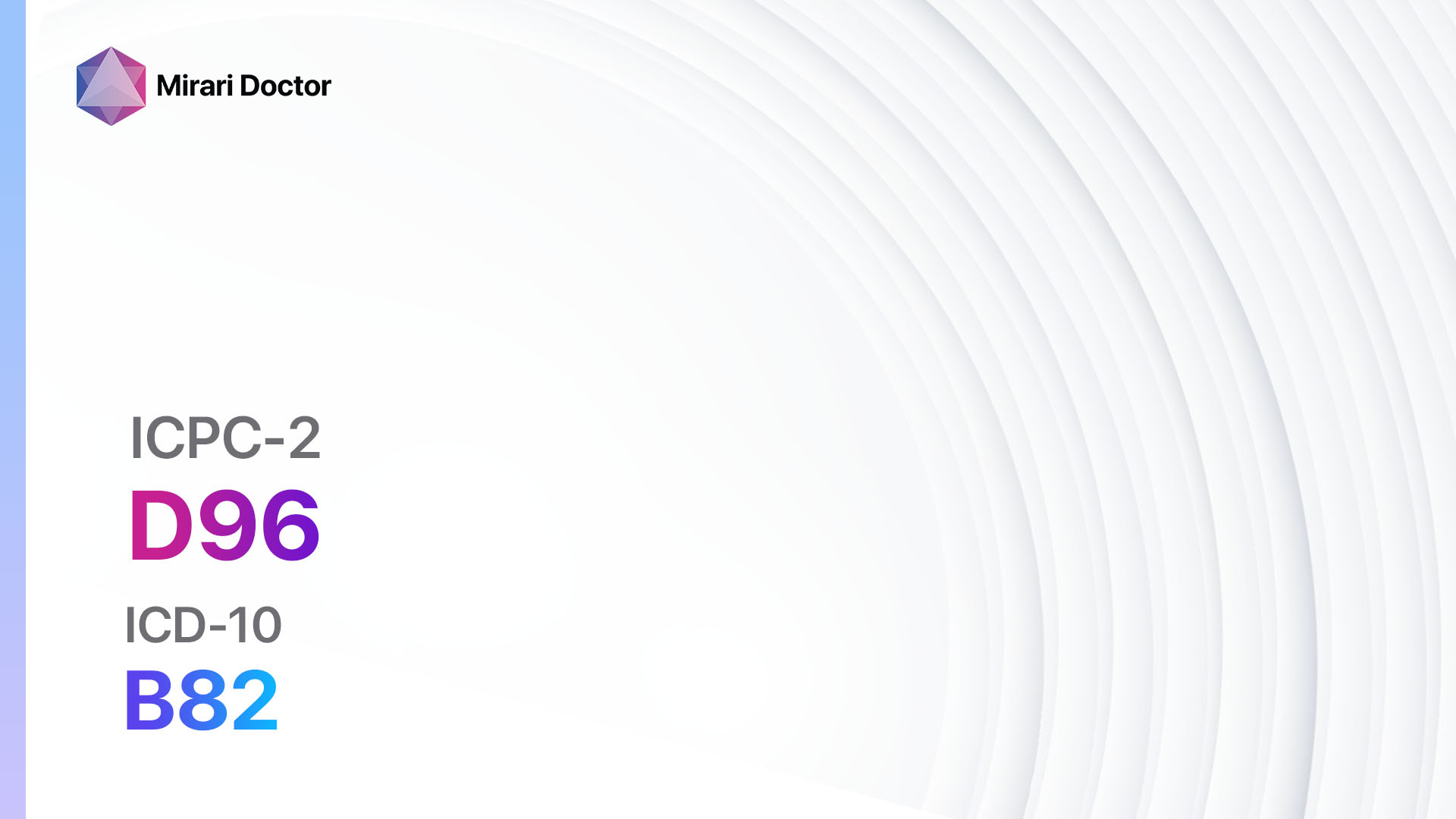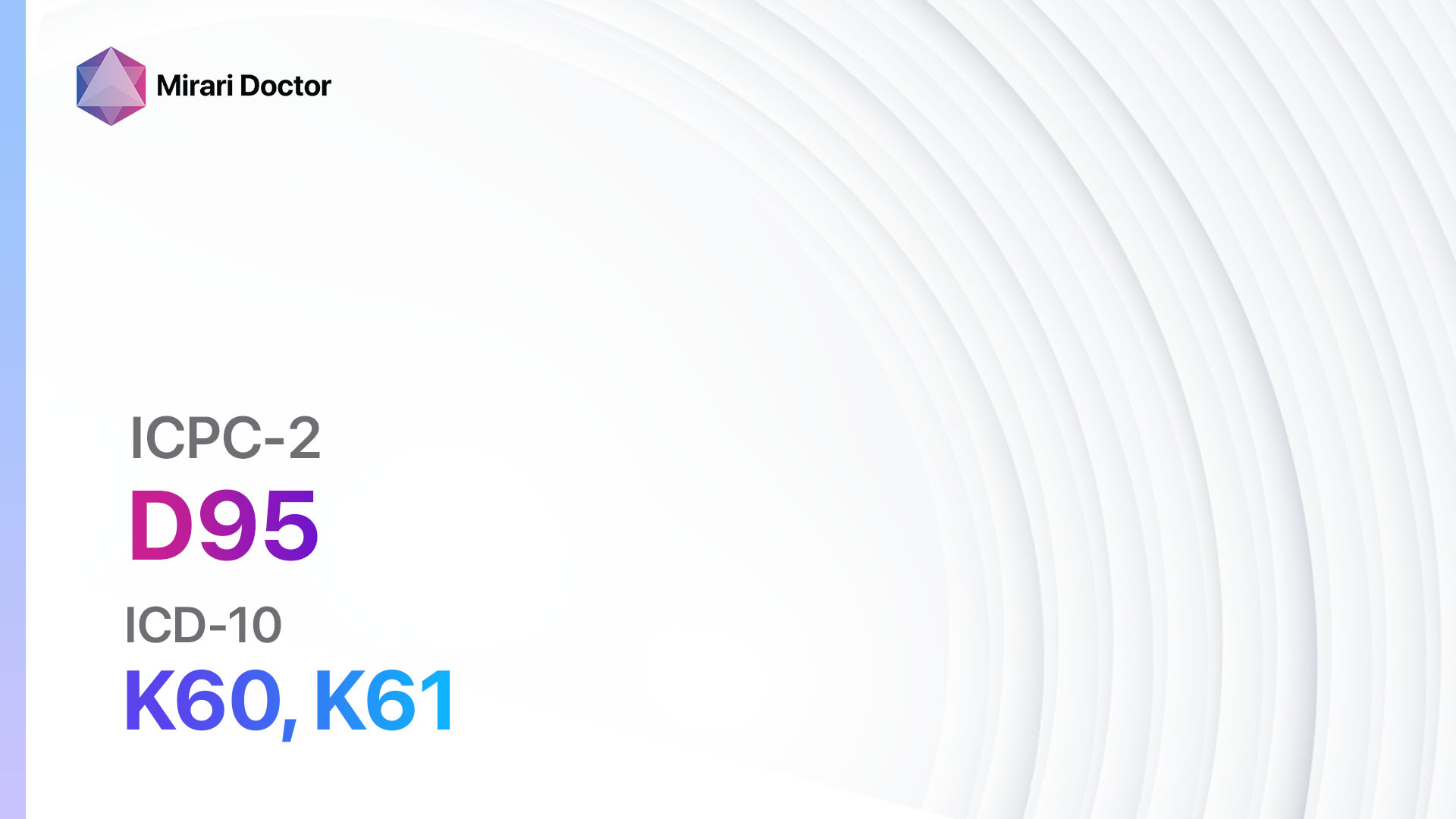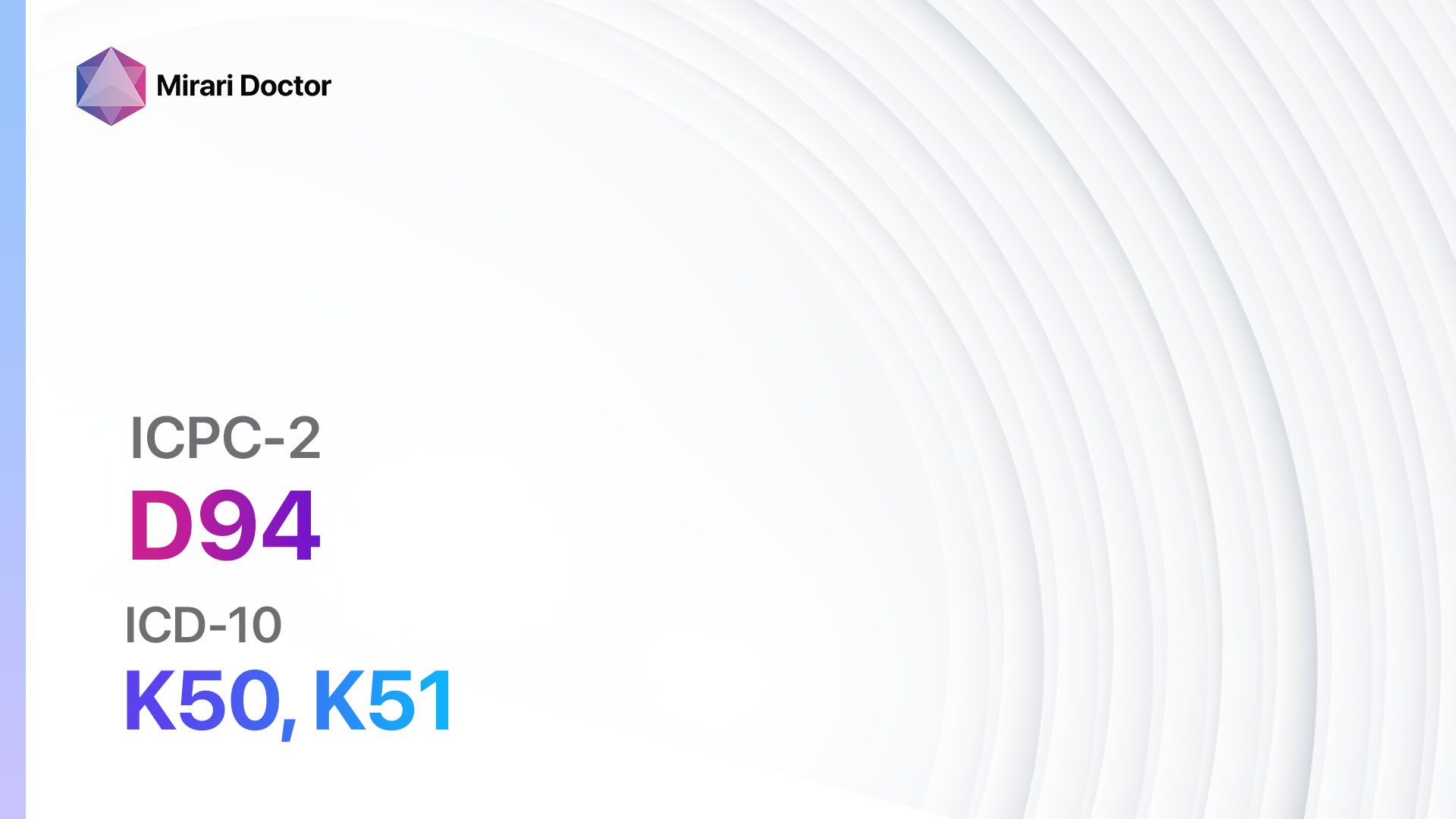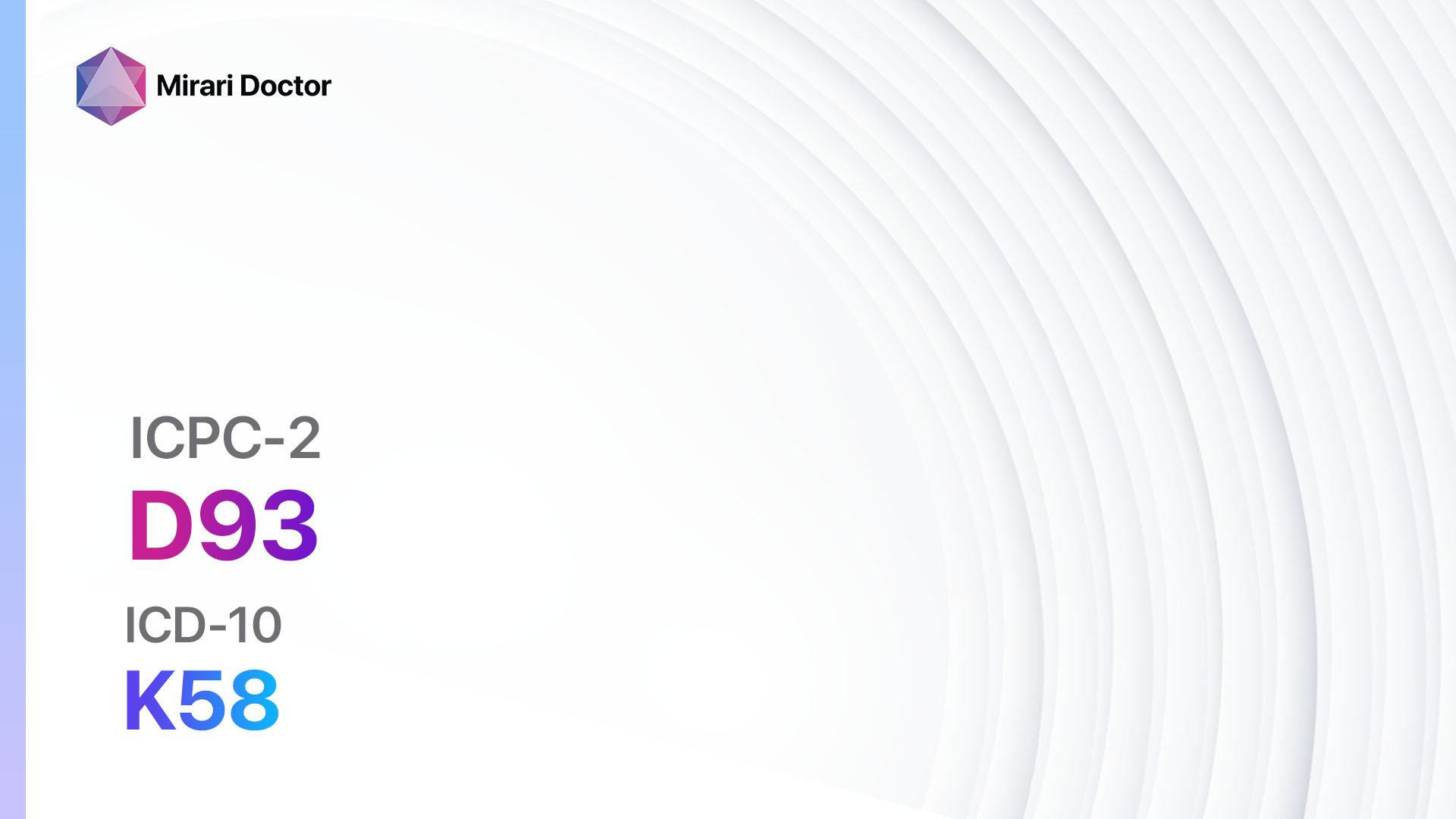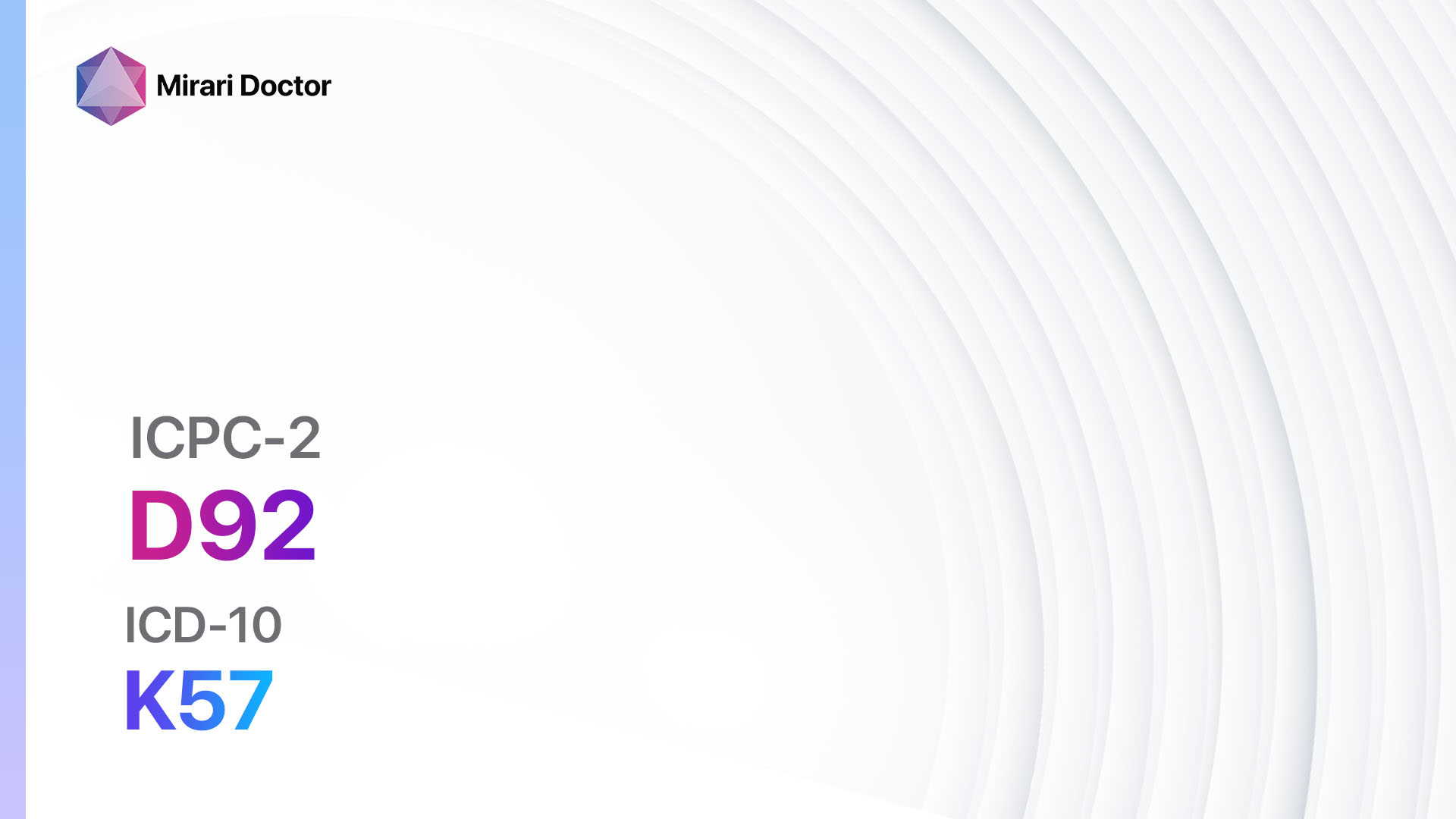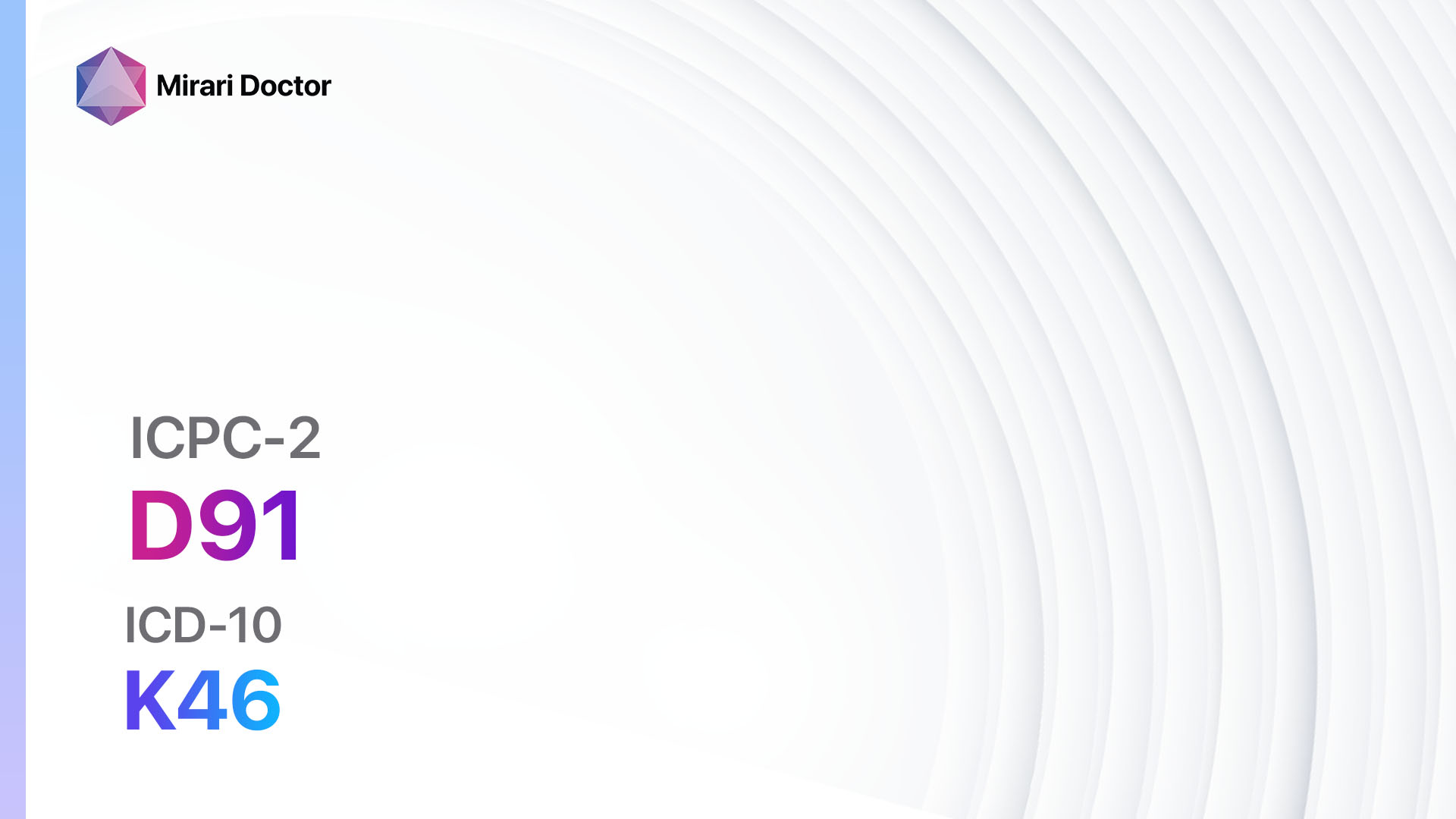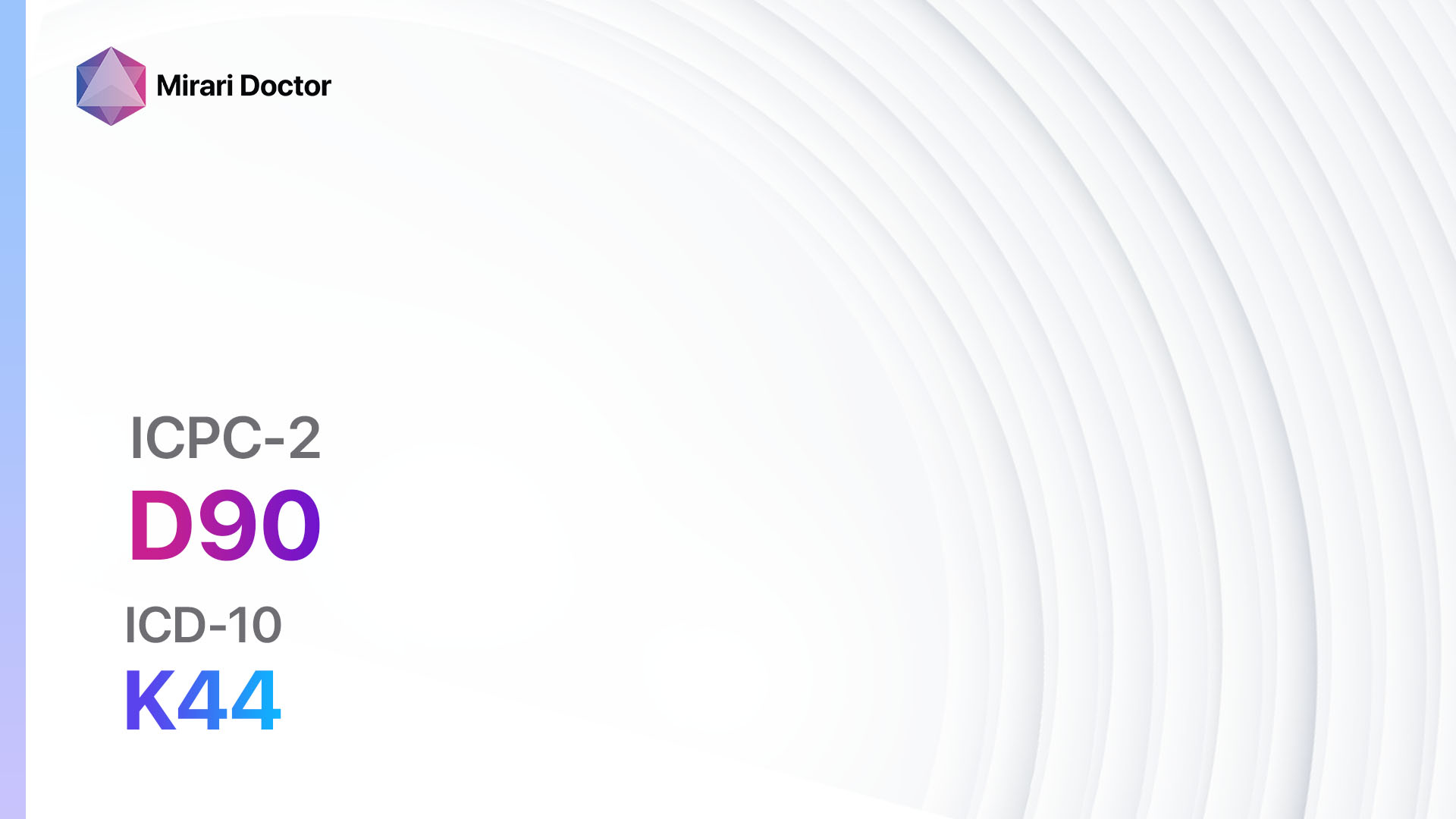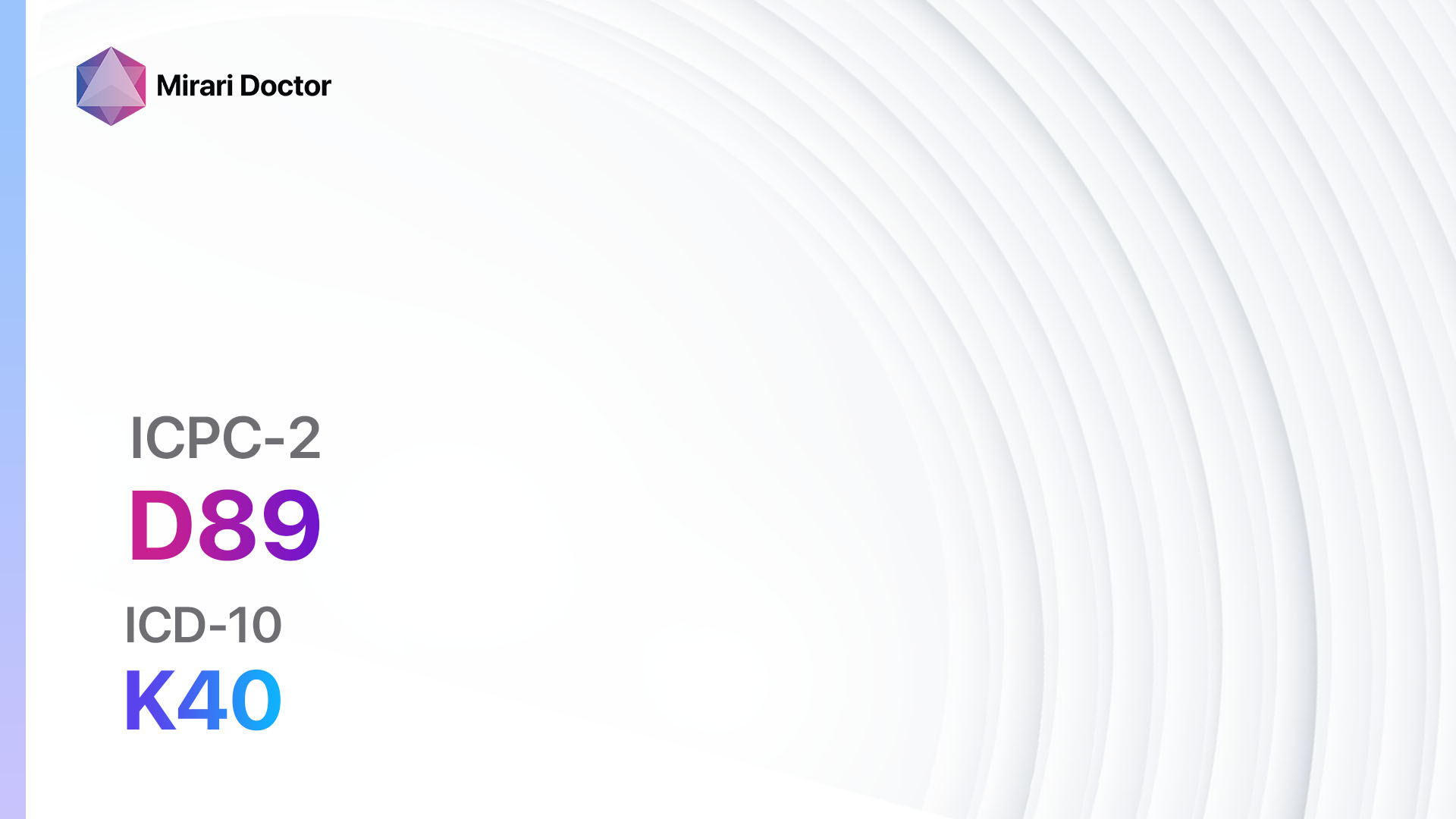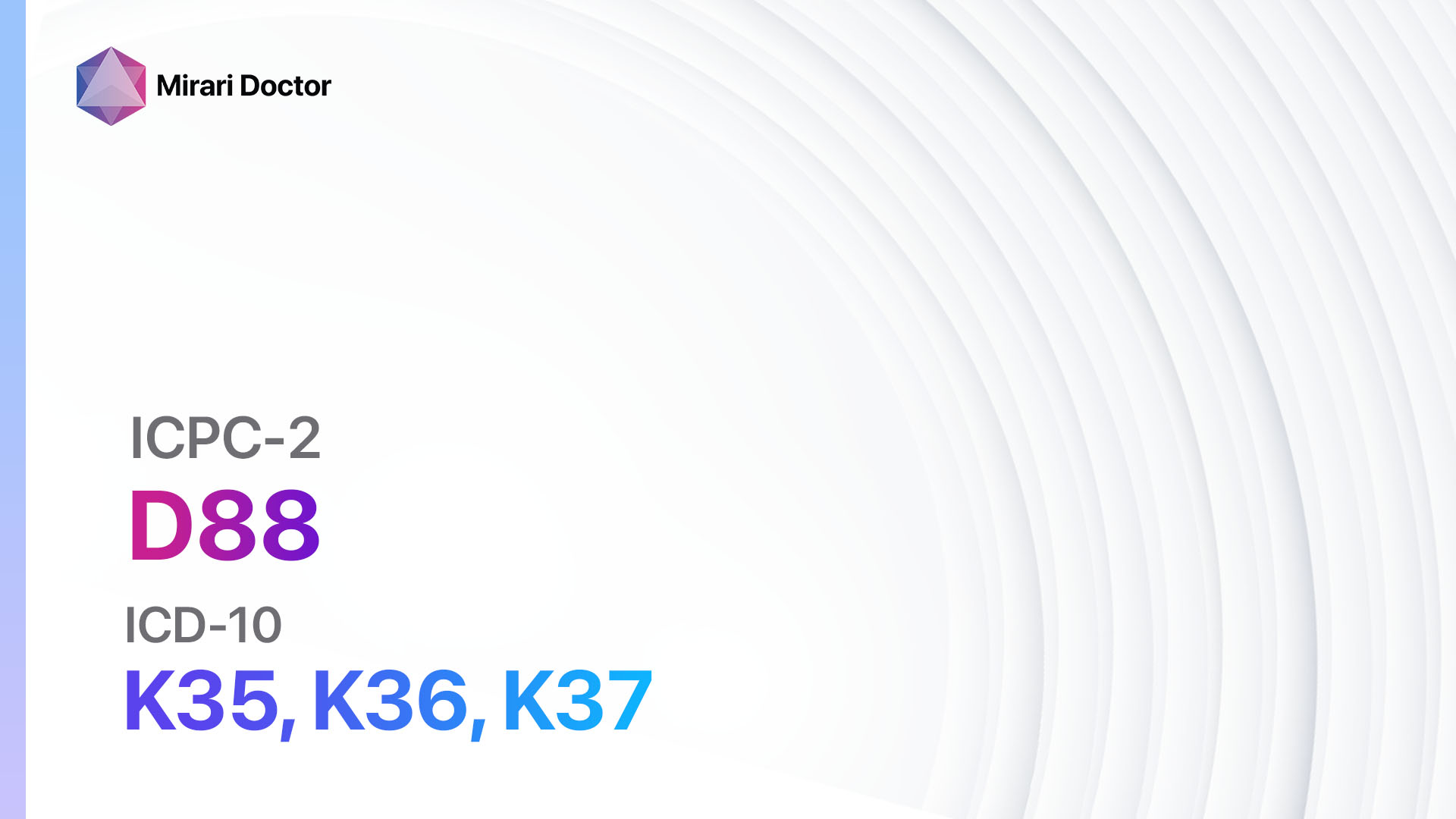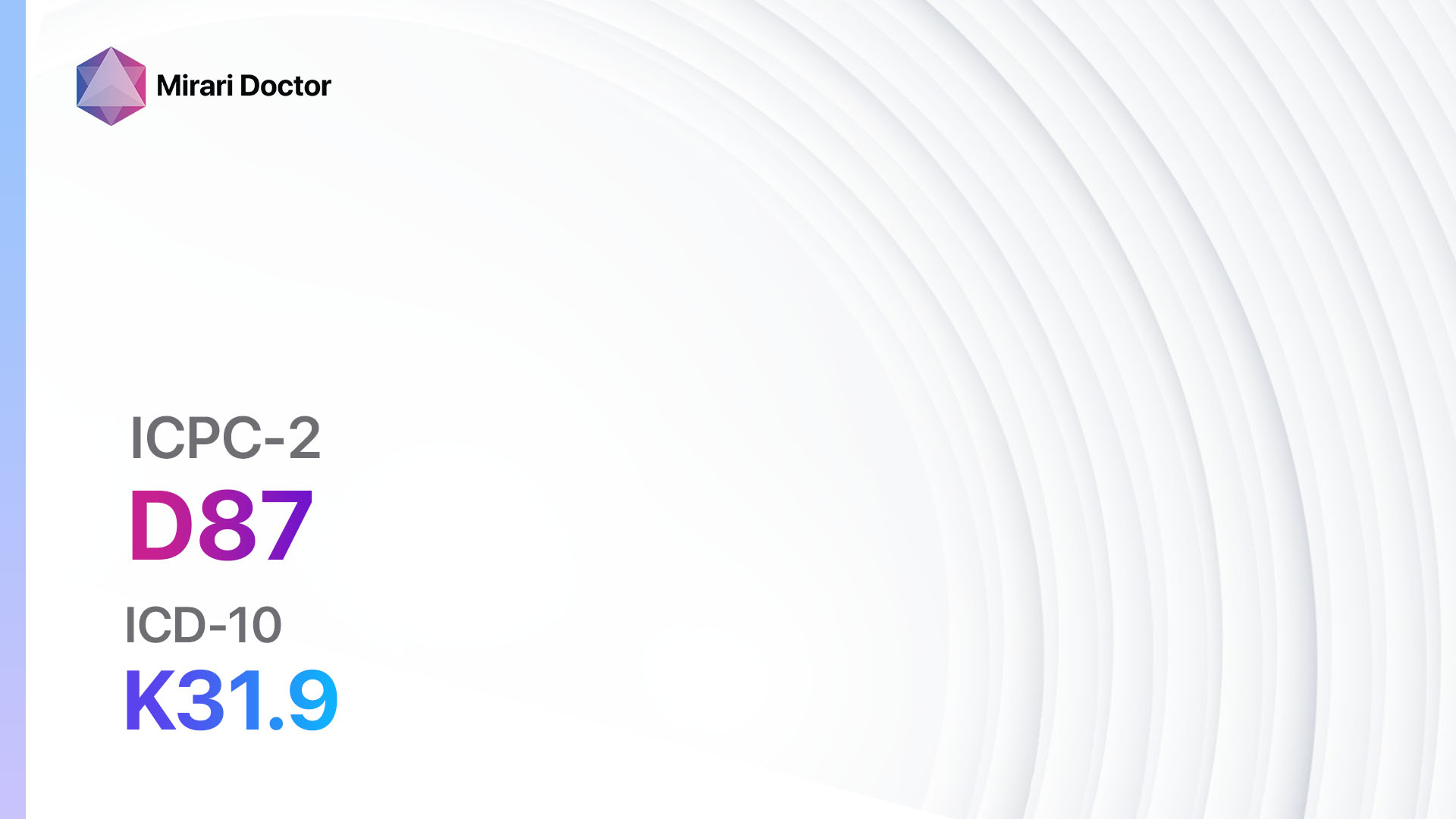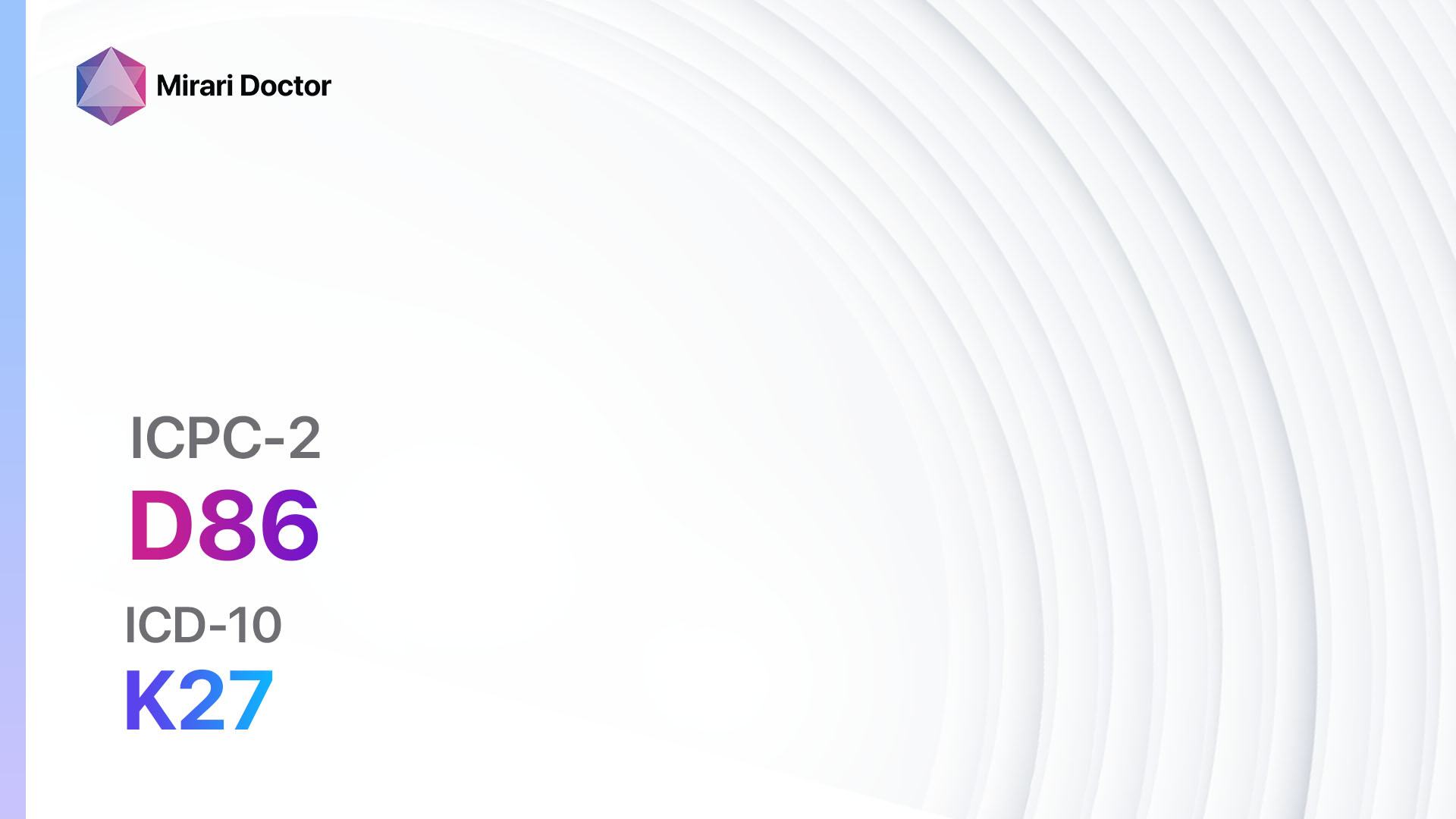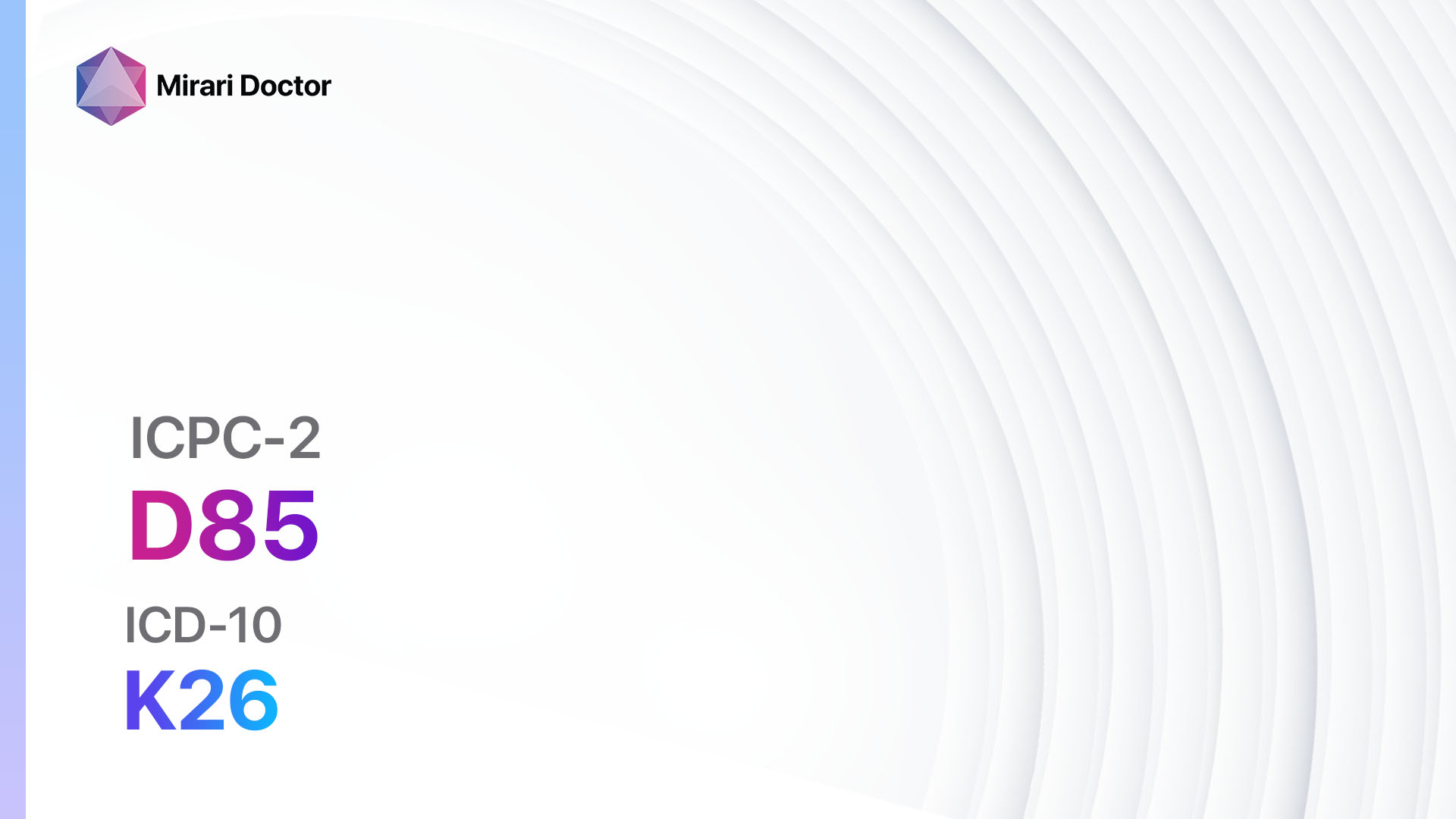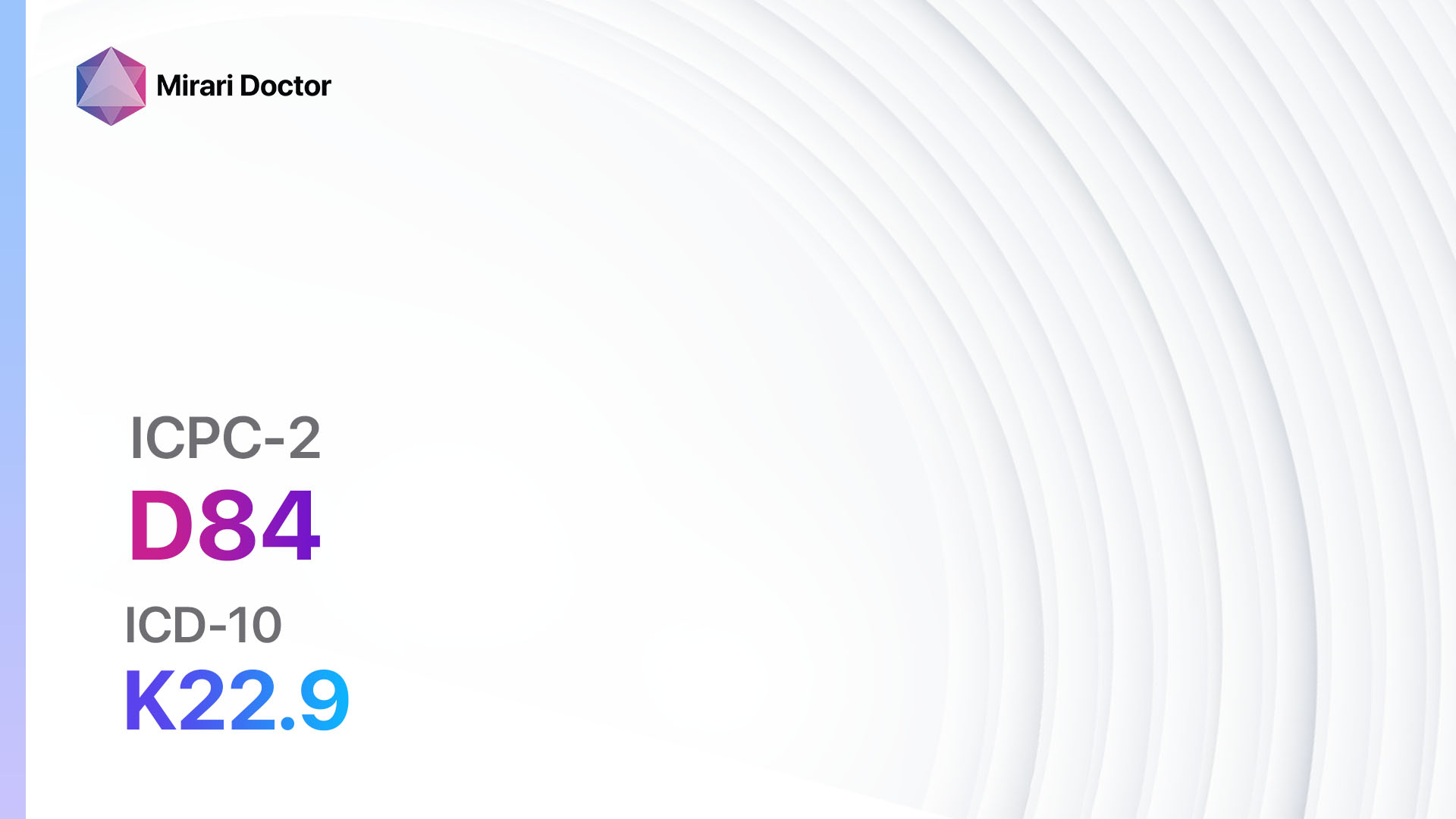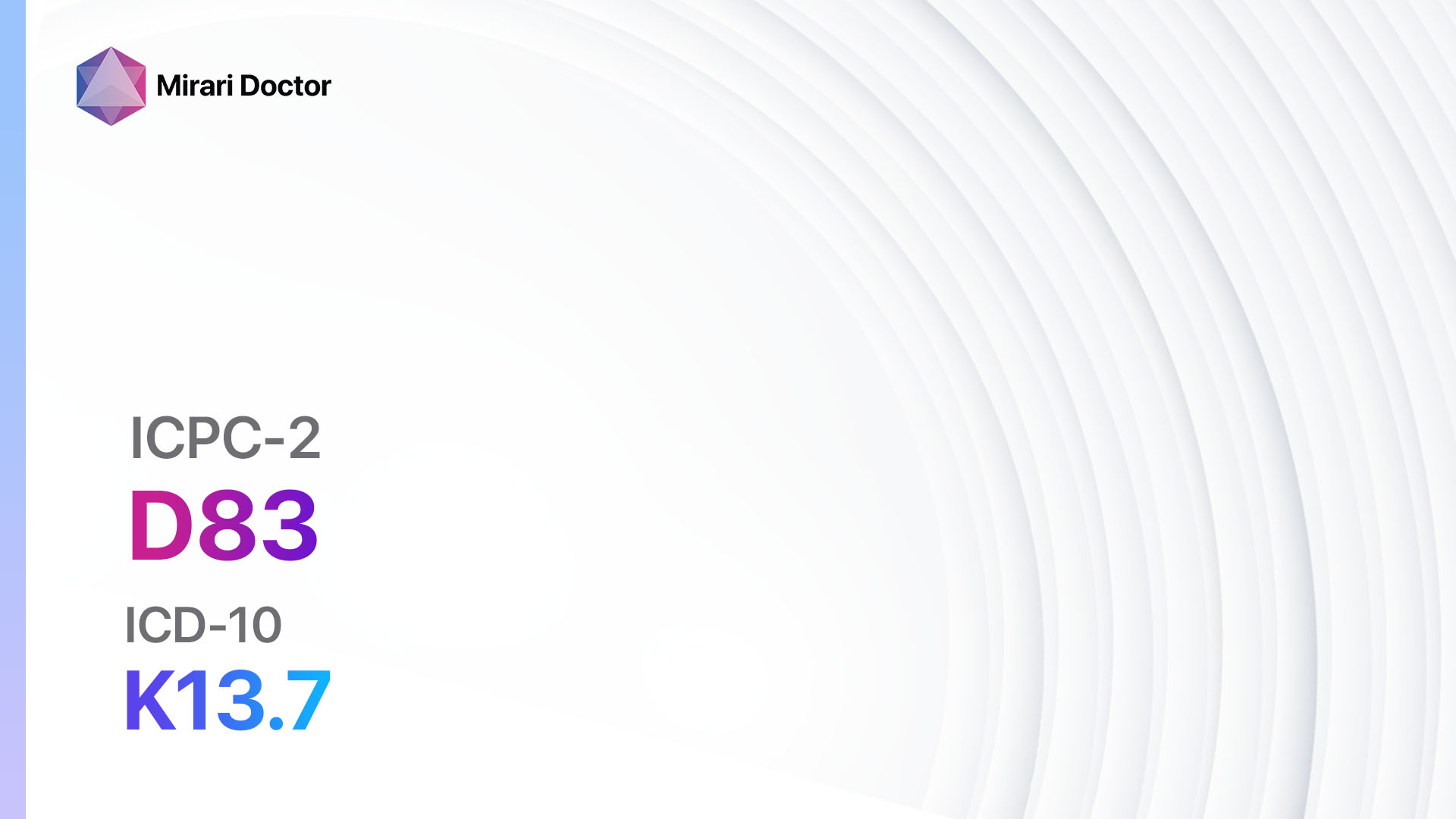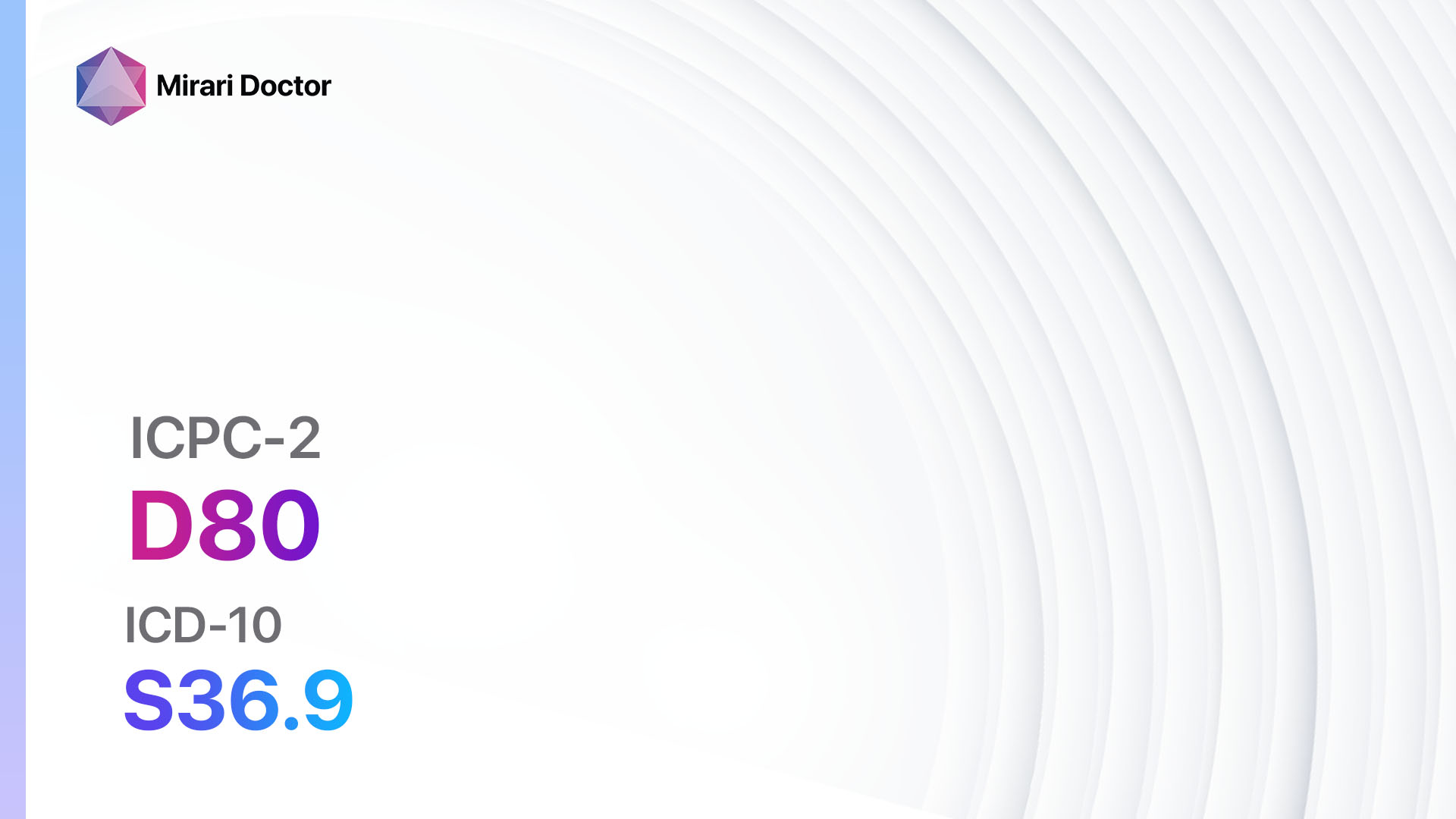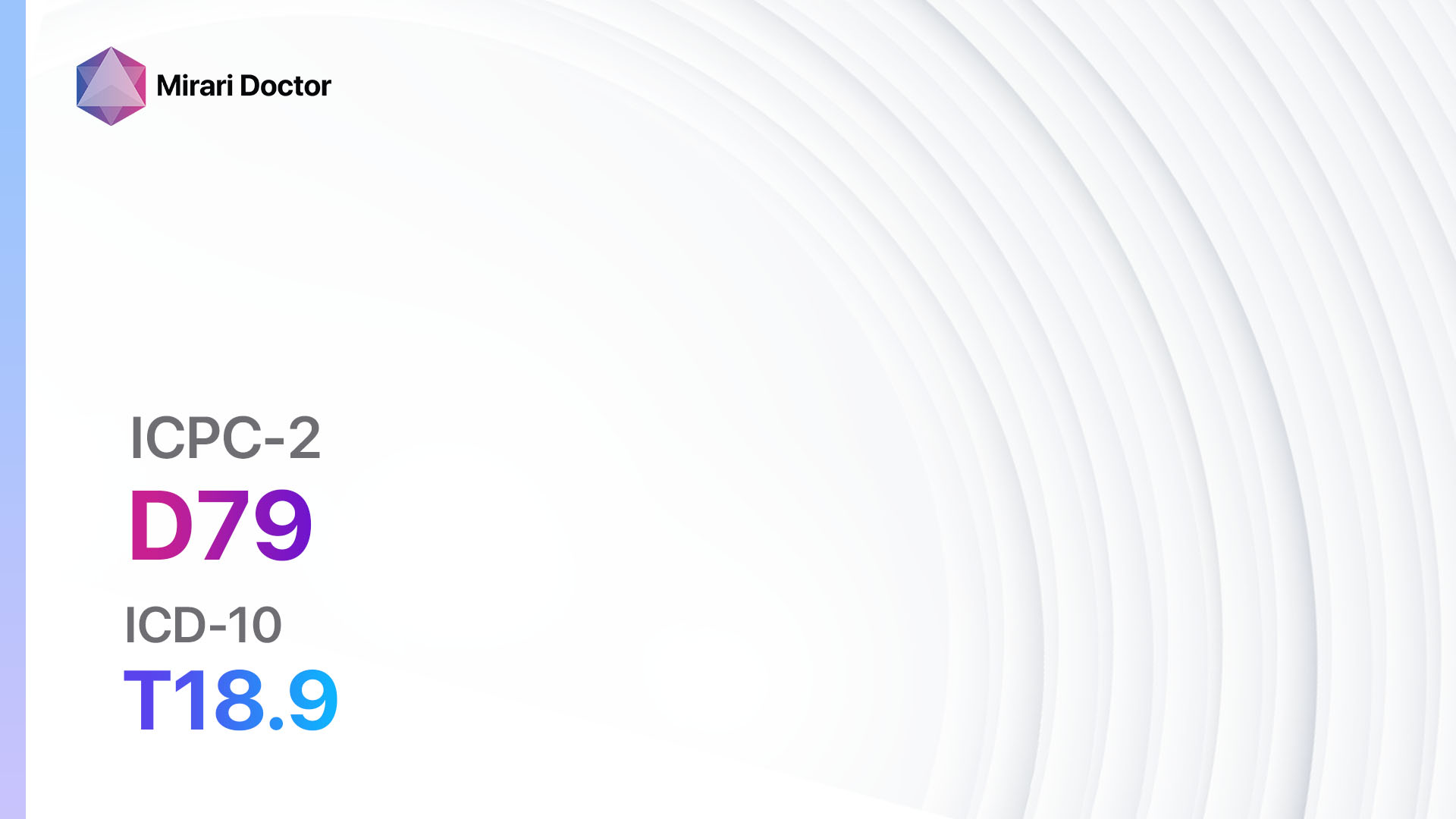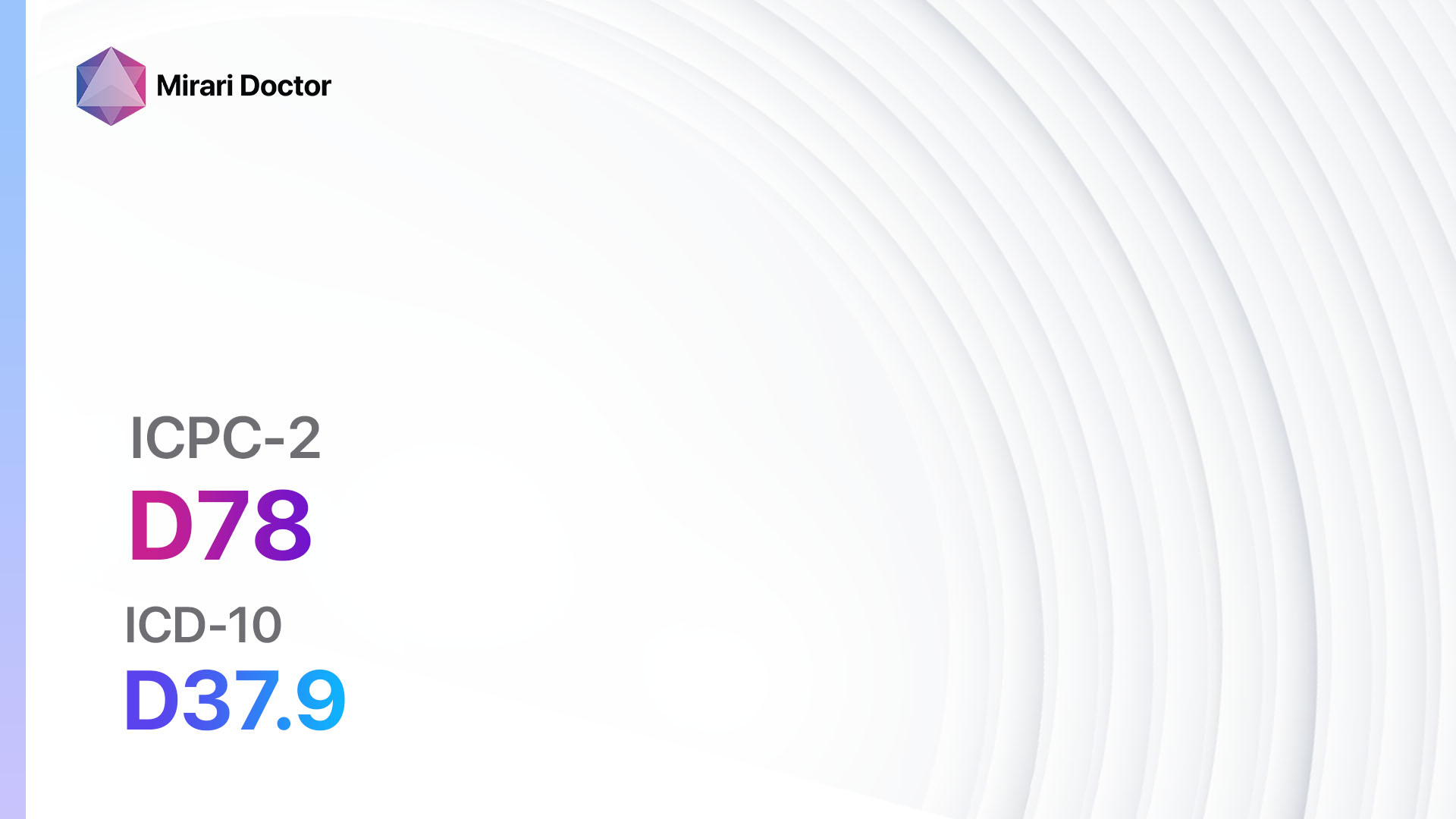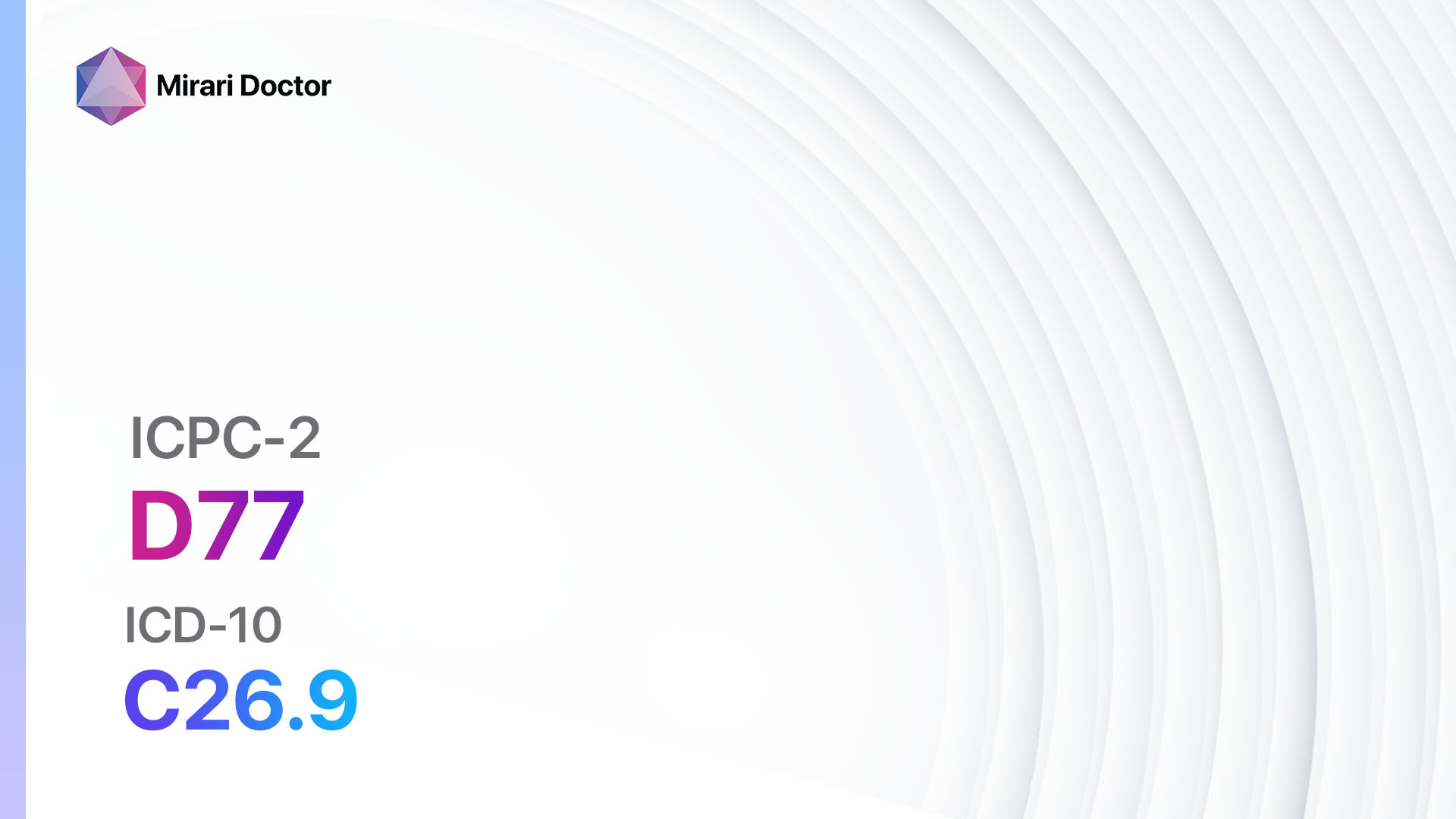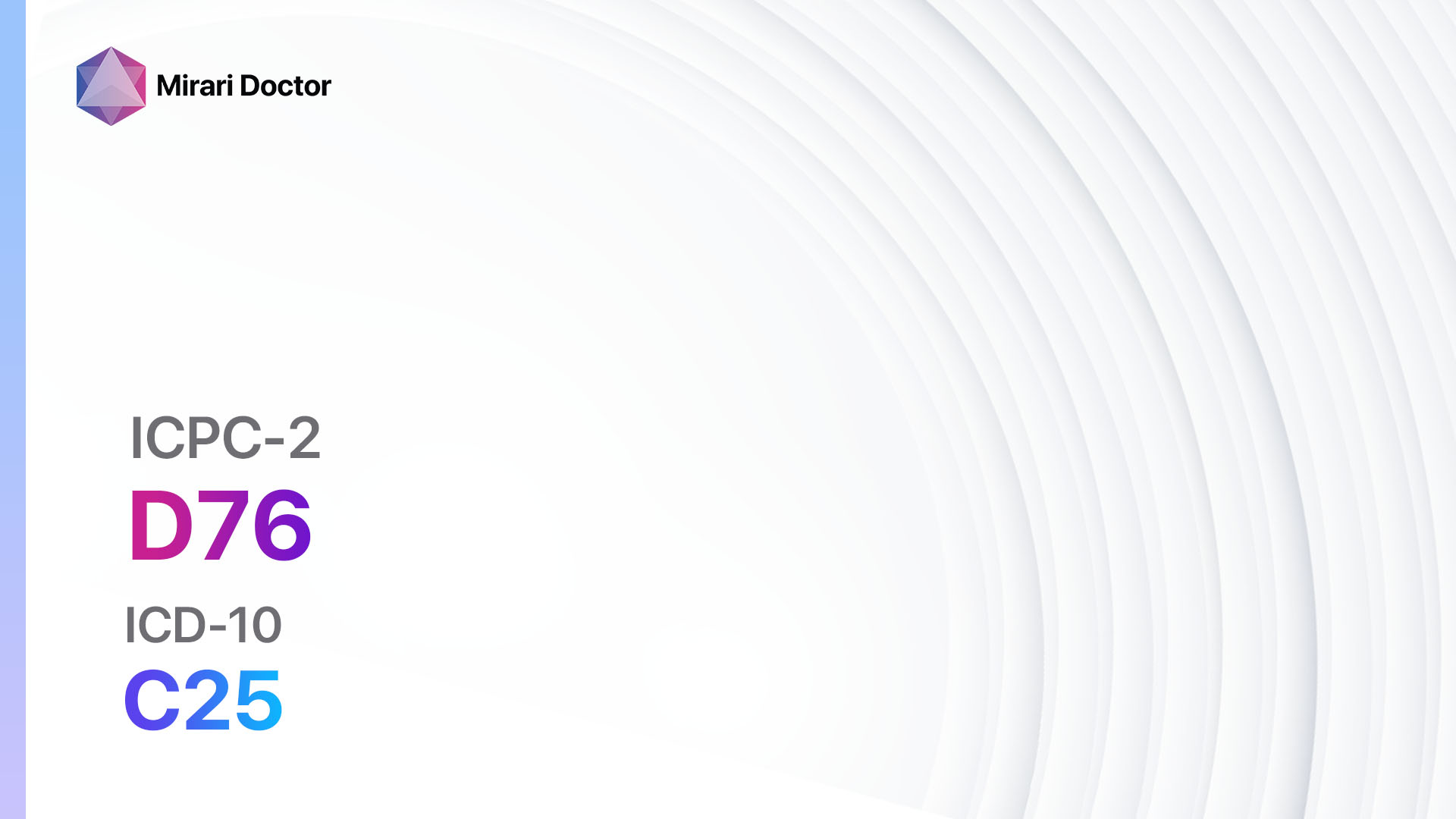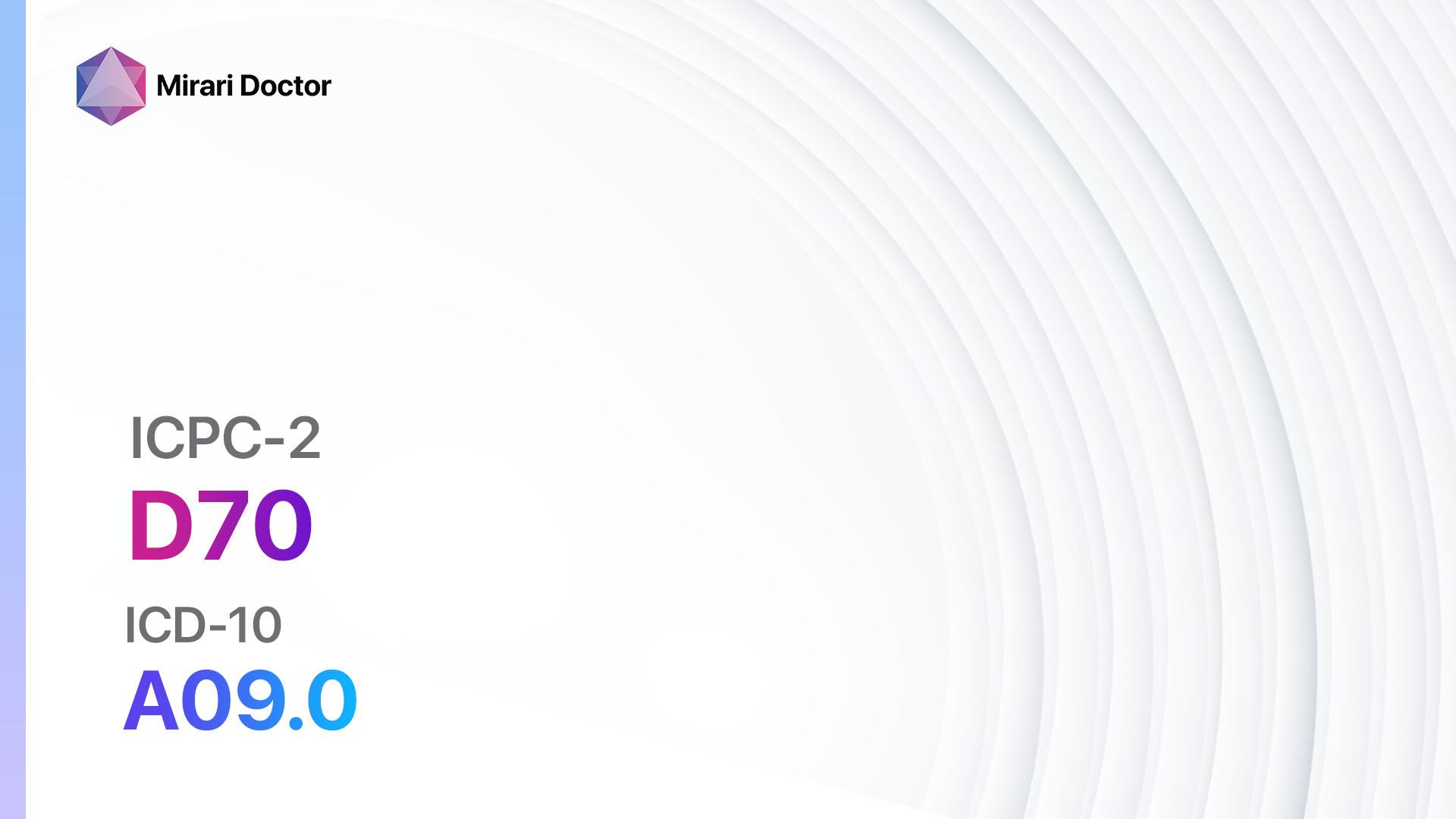
Introduction
Gastrointestinal infection refers to an infection that affects the digestive system, including the stomach and intestines. It is commonly caused by bacteria, viruses, or parasites and can result in symptoms such as diarrhea, abdominal pain, and vomiting[1]. The aim of this guide is to provide an overview of the symptoms, causes, diagnostic steps, possible interventions, and lifestyle interventions for gastrointestinal infection.
Codes
- ICPC-2 Code: D70 Gastrointestinal infection[2]
- ICD-10 Code: A09.0 Other and unspecified gastroenteritis and colitis of infectious origin[3]
Symptoms
- Diarrhea: Frequent loose or watery stools[4].
- Abdominal pain: Cramping or discomfort in the stomach area[4].
- Nausea and vomiting: Feeling of queasiness and the act of expelling stomach contents[4].
- Fever: Elevated body temperature[4].
- Loss of appetite: Decreased desire to eat[4].
- Fatigue: Feeling of tiredness or lack of energy[4].
Causes
- Bacterial infection: Common bacteria that can cause gastrointestinal infection include Escherichia coli (E. coli), Salmonella, and Campylobacter[5].
- Viral infection: Viruses such as norovirus and rotavirus can cause gastrointestinal infection[5].
- Parasitic infection: Parasites like Giardia and Cryptosporidium can lead to gastrointestinal infection[5].
- Contaminated food or water: Consuming food or water that is contaminated with bacteria, viruses, or parasites can result in infection[6].
- Poor hygiene: Not washing hands properly after using the restroom or before handling food can increase the risk of infection[6].
Diagnostic Steps
Medical History
- Gather information about the patient’s recent travel history, as certain infections may be more common in specific regions[7].
- Ask about the duration and frequency of symptoms, as well as any associated factors such as food consumption or exposure to sick individuals[7].
- Inquire about any underlying medical conditions or medications that may affect the immune system[7].
Physical Examination
- Perform a general physical examination to assess vital signs, including temperature, heart rate, and blood pressure[8].
- Palpate the abdomen to check for tenderness or abnormal masses[8].
- Check for signs of dehydration, such as dry mouth or decreased skin turgor[8].
Laboratory Tests
- Stool culture: Collect a stool sample to identify the presence of bacteria, viruses, or parasites[9].
- Complete blood count (CBC): Assess white blood cell count, which may be elevated in the case of infection[9].
- Electrolyte panel: Measure levels of electrolytes, such as sodium and potassium, to evaluate for dehydration[9].
- C-reactive protein (CRP): Elevated levels of CRP may indicate indicate inflammation in the body[9].
Diagnostic Imaging
- Abdominal X-ray: May be used to rule out other causes of abdominal pain or to assess for complications such as bowel obstruction[10].
- Abdominal ultrasound: Can help visualize the organs in the abdomen and detect any abnormalities[10].
- CT scan: Provides detailed images of the abdomen and can help identify any structural abnormalities or complications[10].
Other Tests
- Polymerase chain reaction (PCR) testing: Used to detect specific pathogens, such as norovirus or rotavirus.
- Serology testing: Measures the presence of antibodies in the blood to determine if the infection is due to a viral or bacterial cause.
- Endoscopy: In some cases, an endoscope may be used to visualize the gastrointestinal tract and obtain biopsies for further evaluation.
Follow-up and Patient Education
- Advise the patient to maintain good hygiene practices, including proper handwashing and food handling.
- Instruct the patient to stay hydrated by drinking plenty of fluids.
- Provide information on when to seek medical attention if symptoms worsen or persist.
Possible Interventions
Traditional Interventions
Medications:
Top 5 drugs for Gastrointestinal infection:
- Antibiotics (e.g., Ciprofloxacin, Azithromycin, Metronidazole):
- Cost: Generic versions can range from $3 to $50 per month.
- Contraindications: Known hypersensitivity to the medication.
- Side effects: Nausea, diarrhea, abdominal pain.
- Severe side effects: Allergic reactions, tendon rupture (with fluoroquinolones).
- Drug interactions: Warfarin, antacids.
- Warning: Complete the full course of antibiotics as prescribed.
- Antidiarrheal agents (e.g., Loperamide):
- Cost: Generic versions are typically less than $10 per month.
- Contraindications: Severe abdominal pain, bloody diarrhea.
- Side effects: Constipation, dizziness, dry mouth.
- Severe side effects: Paralytic ileus, toxic megacolon (rare).
- Drug interactions: Opioids, anticholinergic medications.
- Warning: Do not use in cases of bacterial or parasitic infections.
- Probiotics (e.g., Lactobacillus, Bifidobacterium):
- Cost: Varies depending on the specific product.
- Contraindications: Immunocompromised individuals.
- Side effects: Gas, bloating, mild gastrointestinal discomfort.
- Severe side effects: Invasive infection (rare).
- Drug interactions: None reported.
- Warning: Choose a reputable brand with evidence of efficacy.
- Antiemetics (e.g., Ondansetron, Metoclopramide):
- Cost: Generic versions can range from $10 to $50 per month.
- Contraindications: Bowel obstruction, Parkinson’s disease (with metoclopramide).
- Side effects: Headache, dizziness, drowsiness.
- Severe side effects: Torsades de pointes (with ondansetron).
- Drug interactions: Serotonin modulators, antipsychotics.
- Warning: Use caution in patients with cardiac conditions.
- Fluid replacement solutions (e.g., Oral rehydration solution):
- Cost: Varies depending on the brand and quantity.
- Contraindications: None.
- Side effects: None.
- Severe side effects: None.
- Drug interactions: None.
- Warning: Use as directed to prevent dehydration.
Alternative Drugs:
- Natural remedies: Ginger, peppermint, and chamomile may help alleviate symptoms of gastrointestinal infection. Cost: Varies depending on the specific product.
- Homeopathic remedies: Products such as Arsenicum album and Veratrum album are sometimes used for gastrointestinal infection. Cost: Varies depending on the specific product.
- Herbal supplements: Certain herbs, such as goldenseal and berberine, have antimicrobial properties that may help fight gastrointestinal infection. Cost: Varies depending on the specific supplement.
Surgical Procedures:
In general, surgical intervention is not typically required for gastrointestinal infection. However, in rare cases where complications such as bowel obstruction or perforation occur, surgical intervention may be necessary. The cost of surgical procedures can vary significantly depending on the specific procedure and location.
Alternative Interventions
- Probiotics: Certain strains of probiotics, such as Saccharomyces boulardii, may help reduce the duration and severity of gastrointestinal infection. Cost: Varies depending on the specific product.
- Herbal remedies: Herbs like oregano oil and garlic have antimicrobial properties that may help fight gastrointestinal infection. Cost: Varies depending on the specific product.
- Acupuncture: May help alleviate symptoms such as abdominal pain and nausea. Cost: $60-$120 per session.
- Homeopathy: Some homeopathic remedies, such as Arsenicum album and Veratrum album, are believed to help with gastrointestinal infection. Cost: Varies depending on the specific product.
- Hydrotherapy: The use of water, such as warm compresses or sitz baths, may provide relief from symptoms. Cost: Varies depending on the specific treatment.
Lifestyle Interventions
- Hydration: Drink plenty of fluids, such as water or electrolyte solutions, to prevent dehydration.
- Rest: Get adequate rest to allow the body to recover.
- Dietary modifications: Follow a bland diet, avoiding spicy or greasy foods that may exacerbate symptoms.
- Hand hygiene: Wash hands thoroughly with soap and water before handling food or after using the restroom.
- Food safety: Practice proper food handling and storage to prevent contamination.
It is important to note that the cost ranges provided are approximate and may vary depending on the location and availability of the interventions.
Mirari Cold Plasma Alternative Intervention
Understanding Mirari Cold Plasma
- Safe and Non-Invasive Treatment: Mirari Cold Plasma is a safe and non-invasive treatment option for various skin conditions. It does not require incisions, minimizing the risk of scarring, bleeding, or tissue damage.
- Efficient Extraction of Foreign Bodies: Mirari Cold Plasma facilitates the removal of foreign bodies from the skin by degrading and dissociating organic matter, allowing easier access and extraction.
- Pain Reduction and Comfort: Mirari Cold Plasma has a local analgesic effect, providing pain relief during the treatment, making it more comfortable for the patient.
- Reduced Risk of Infection: Mirari Cold Plasma has antimicrobial properties, effectively killing bacteria and reducing the risk of infection.
- Accelerated Healing and Minimal Scarring: Mirari Cold Plasma stimulates wound healing and tissue regeneration, reducing healing time and minimizing the formation of scars.
Mirari Cold Plasma Prescription
Video instructions for using Mirari Cold Plasma Device – D70 Gastrointestinal infection (ICD-10:A09.0)
| Mild | Moderate | Severe |
| Mode setting: 1 (Infection) Location: 2 (Prostate & Uterus) Morning: 15 minutes, Evening: 15 minutes |
Mode setting: 1 (Infection) Location: 2 (Prostate & Uterus) Morning: 30 minutes, Lunch: 30 minutes, Evening: 30 minutes |
Mode setting: 1 (Infection) Location: 2 (Prostate & Uterus) Morning: 30 minutes, Lunch: 30 minutes, Evening: 30 minutes |
| Mode setting: 2 (Wound Healing) Location: 3 (Kidney, Liver & Spleen) Morning: 15 minutes, Evening: 15 minutes |
Mode setting: 2 (Wound Healing) Location: 3 (Kidney, Liver & Spleen) Morning: 30 minutes, Lunch: 30 minutes, Evening: 30 minutes |
Mode setting: 2 (Wound Healing) Location: 3 (Kidney, Liver & Spleen) Morning: 30 minutes, Lunch: 30 minutes, Evening: 30 minutes |
| Mode setting: 7 (Immunotherapy) Location: 1 (Sacrum) Morning: 15 minutes, Evening: 15 minutes |
Mode setting: 7 (Immunotherapy) Location: 1 (Sacrum) Morning: 30 minutes, Lunch: 30 minutes, Evening: 30 minutes |
Mode setting: 7 (Immunotherapy) Location: 1 (Sacrum) Morning: 30 minutes, Lunch: 30 minutes, Evening: 30 minutes |
| Total Morning: 45 minutes approx. $7.50 USD, Evening: 45 minutes approx. $7.50 USD |
Total Morning: 90 minutes approx. $15 USD, Lunch: 90 minutes approx. $15 USD, Evening: 90 minutes approx. $15 USD, |
Total Morning: 90 minutes approx. $15 USD, Lunch: 90 minutes approx. $15 USD, Evening: 90 minutes approx. $15 USD, |
| Usual treatment for 7-60 days approx. $105 USD – $900 USD | Usual treatment for 6-8 weeks approx. $1,890 USD – $2,520 USD |
Usual treatment for 3-6 months approx. $4,050 USD – $8,100 USD
|
 |
|
Use the Mirari Cold Plasma device to treat Gastrointestinal infection effectively.
WARNING: MIRARI COLD PLASMA IS DESIGNED FOR THE HUMAN BODY WITHOUT ANY ARTIFICIAL OR THIRD PARTY PRODUCTS. USE OF OTHER PRODUCTS IN COMBINATION WITH MIRARI COLD PLASMA MAY CAUSE UNPREDICTABLE EFFECTS, HARM OR INJURY. PLEASE CONSULT A MEDICAL PROFESSIONAL BEFORE COMBINING ANY OTHER PRODUCTS WITH USE OF MIRARI.
Step 1: Cleanse the Skin
- Start by cleaning the affected area of the skin with a gentle cleanser or mild soap and water. Gently pat the area dry with a clean towel.
Step 2: Prepare the Mirari Cold Plasma device
- Ensure that the Mirari Cold Plasma device is fully charged or has fresh batteries as per the manufacturer’s instructions. Make sure the device is clean and in good working condition.
- Switch on the Mirari device using the power button or by following the specific instructions provided with the device.
- Some Mirari devices may have adjustable settings for intensity or treatment duration. Follow the manufacturer’s instructions to select the appropriate settings based on your needs and the recommended guidelines.
Step 3: Apply the Device
- Place the Mirari device in direct contact with the affected area of the skin. Gently glide or hold the device over the skin surface, ensuring even coverage of the area experiencing.
- Slowly move the Mirari device in a circular motion or follow a specific pattern as indicated in the user manual. This helps ensure thorough treatment coverage.
Step 4: Monitor and Assess:
- Keep track of your progress and evaluate the effectiveness of the Mirari device in managing your Gastrointestinal infection. If you have any concerns or notice any adverse reactions, consult with your health care professional.
Note
This guide is for informational purposes only and should not replace the advice of a medical professional. Always consult with your healthcare provider or a qualified medical professional for personal advice, diagnosis, or treatment. Do not solely rely on the information presented here for decisions about your health. Use of this information is at your own risk. The authors of this guide, nor any associated entities or platforms, are not responsible for any potential adverse effects or outcomes based on the content.
Mirari Cold Plasma System Disclaimer
- Purpose: The Mirari Cold Plasma System is a Class 2 medical device designed for use by trained healthcare professionals. It is registered for use in Thailand and Vietnam. It is not intended for use outside of these locations.
- Informational Use: The content and information provided with the device are for educational and informational purposes only. They are not a substitute for professional medical advice or care.
- Variable Outcomes: While the device is approved for specific uses, individual outcomes can differ. We do not assert or guarantee specific medical outcomes.
- Consultation: Prior to utilizing the device or making decisions based on its content, it is essential to consult with a Certified Mirari Tele-Therapist and your medical healthcare provider regarding specific protocols.
- Liability: By using this device, users are acknowledging and accepting all potential risks. Neither the manufacturer nor the distributor will be held accountable for any adverse reactions, injuries, or damages stemming from its use.
- Geographical Availability: This device has received approval for designated purposes by the Thai and Vietnam FDA. As of now, outside of Thailand and Vietnam, the Mirari Cold Plasma System is not available for purchase or use.
References
- Jayasinghe, S., & Macartney, K. (2013). Gastroenteritis. Australian Family Physician, 42(3), 82-87.
- WONCA International Classification Committee. (2005). ICPC-2: International Classification of Primary Care. Oxford University Press.
- World Health Organization. (2016). International Statistical Classification of Diseases and Related Health Problems 10th Revision.
- Burd, E. M., & Hinrichs, B. H. (2020). Gastrointestinal Infections. In Molecular Diagnostics (pp. 279-294). Springer, Cham.
- Jayasinghe, S., & Macartney, K. (2013). Gastroenteritis. Australian Family Physician, 42(3), 82-87.
- Mounts, Anthony W. ; Ando, Tamie ; Koopmans, Marion ; Bresee, Joseph S. ; Noel, Jacqueline ; Glass, Roger I. (2000). Cold Weather Seasonality of Gastroenteritis Associated with Norwalk-like Viruses. DOI: 10.1086/315586
- Jayaweera, Jayaweera Arachchige Asela Sampath ; Reyes, Mohammed ; Joseph, Anpalaham (2019). Childhood iron deficiency anemia leads to recurrent respiratory tract infections and gastroenteritis. DOI: 10.1038/s41598-019-49122-z
- García Rodríguez, Luis Alberto ; Ruigómez, Ana ; Panés, Julián (2007). Use of Acid-Suppressing Drugs and the Risk of Bacterial Gastroenteritis. DOI: 10.1016/j.cgh.2007.09.010
- Maunula, L. ; Klemola, P. ; Kauppinen, A. ; Söderberg, K. ; Nguyen, T. ; Pitkänen, T. ; Kaijalainen, S. ; Simonen, M. L. ; Miettinen, I. T. ; Lappalainen, M. ; Laine, J. ; Vuento, R. ; Kuusi, M. ; Roivainen, M. (2009). Enteric Viruses in a Large Waterborne Outbreak of Acute Gastroenteritis in Finland. DOI: 10.1007/s12560-008-9004-3
- BANYAI, K ; JAKAB, F ; REUTER, G ; BENE, J ; UJ, M ; MELEGH, B ; SZÜCS, G (2003). Sequence heterogeneity among human picobirnaviruses detected in a gastroenteritis outbreak. DOI: 10.1007/s00705-003-0200-z
Related articles
Made in USA


